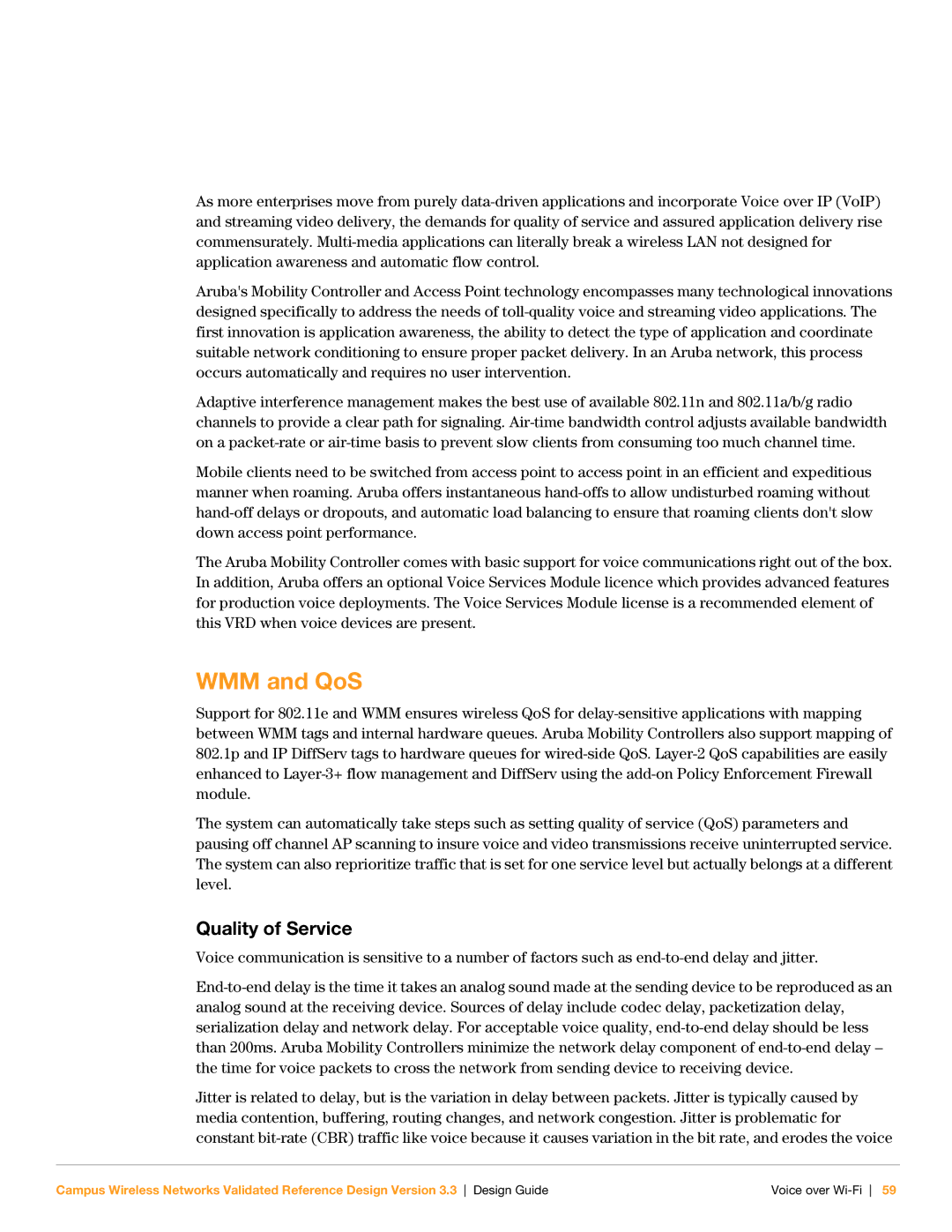Chapter 8
Voice over Wi-Fi
As more enterprises move from purely data-driven applications and incorporate Voice over IP (VoIP) and streaming video delivery, the demands for quality of service and assured application delivery rise commensurately. Multi-media applications can literally break a wireless LAN not designed for application awareness and automatic flow control.
Aruba's Mobility Controller and Access Point technology encompasses many technological innovations designed specifically to address the needs of toll-quality voice and streaming video applications. The first innovation is application awareness, the ability to detect the type of application and coordinate suitable network conditioning to ensure proper packet delivery. In an Aruba network, this process occurs automatically and requires no user intervention.
Adaptive interference management makes the best use of available 802.11n and 802.11a/b/g radio channels to provide a clear path for signaling. Air-time bandwidth control adjusts available bandwidth on a packet-rate or air-time basis to prevent slow clients from consuming too much channel time.
Mobile clients need to be switched from access point to access point in an efficient and expeditious manner when roaming. Aruba offers instantaneous hand-offs to allow undisturbed roaming without hand-off delays or dropouts, and automatic load balancing to ensure that roaming clients don't slow down access point performance.
The Aruba Mobility Controller comes with basic support for voice communications right out of the box. In addition, Aruba offers an optional Voice Services Module licence which provides advanced features for production voice deployments. The Voice Services Module license is a recommended element of this VRD when voice devices are present.
WMM and QoS
Support for 802.11e and WMM ensures wireless QoS for delay-sensitive applications with mapping between WMM tags and internal hardware queues. Aruba Mobility Controllers also support mapping of 802.1p and IP DiffServ tags to hardware queues for wired-side QoS. Layer-2 QoS capabilities are easily enhanced to Layer-3+ flow management and DiffServ using the add-on Policy Enforcement Firewall module.
The system can automatically take steps such as setting quality of service (QoS) parameters and pausing off channel AP scanning to insure voice and video transmissions receive uninterrupted service. The system can also reprioritize traffic that is set for one service level but actually belongs at a different level.
Quality of Service
Voice communication is sensitive to a number of factors such as end-to-end delay and jitter.
End-to-end delay is the time it takes an analog sound made at the sending device to be reproduced as an analog sound at the receiving device. Sources of delay include codec delay, packetization delay, serialization delay and network delay. For acceptable voice quality, end-to-end delay should be less than 200ms. Aruba Mobility Controllers minimize the network delay component of end-to-end delay – the time for voice packets to cross the network from sending device to receiving device.
Jitter is related to delay, but is the variation in delay between packets. Jitter is typically caused by media contention, buffering, routing changes, and network congestion. Jitter is problematic for constant bit-rate (CBR) traffic like voice because it causes variation in the bit rate, and erodes the voice

